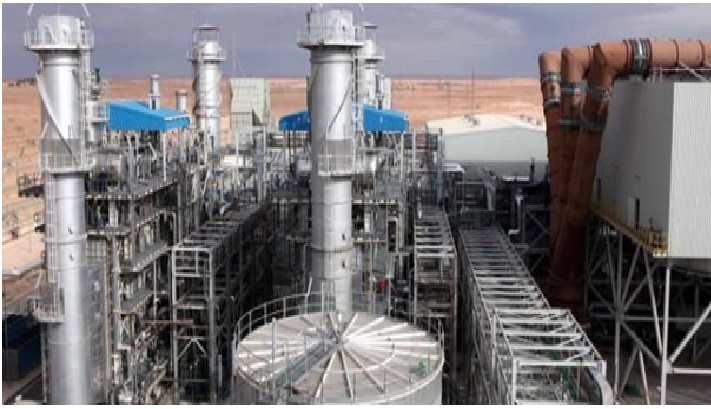The Development of Zero-Carbon Natural Gas
The world is probably stuck with natural gas as one of our primary sources of electricity for the foreseeable future. Cheap and readily available, it now accounts for more than 30 percent of US electricity and 22 percent of world electricity. [1] And although it’s cleaner than coal, it’s still a massive source of carbon emissions.

Figure 1: The zero-carbon natural gas power plant [2]
A pilot power plant just outside Houston, in the heart of the US petroleum and refining industry, is testing a technology that could make clean energy from natural gas a reality. The company behind the 50-megawatt project, Net Power, believes it can generate power at least as cheaply as standard natural-gas plants and capture essentially all the carbon dioxide released in the process. The zero-carbon power plant is shown in figure 1.
If so, it would mean the world has a way to produce carbon-free energy from a fossil fuel at a reasonable cost. Such natural-gas plants could be cranked up and down on demand, avoiding the high capital costs of nuclear power and sidestepping the unsteady supply that renewables generally provide.
BP is leading on tackling methane emissions to help maximise the climate benefits of gas. That means reducing flaring and minimizing methane leaks. BP was among the first of the energy companies to set a stringent target of 0.2% for methane emissions. [3] BP was the first to commit to continuous methane measurement for all our new oil and gas projects. To achieve this, BP adapted technology from NASA's mission to Mars, the medical sector and the defence industry to deploy drones, lasers and cameras across its operations. BP is a signatory of the Methane Guiding Principles, an initiative to help lower methane emissionsacross the industry.
Looking ahead, natural gas can be decarbonized. When it's burned to generate power or heat for industry the carbon dioxide generated can be captured so that it doesn't reach the air through using carbon capture (CCUS) technologies. And, it can also be used to produce hydrogen, which produces water-vapour when burned. Through the Oil and Gas Climate Initiative and the Net Zero Teesside project, BP is working to accelerate the potential of CCUS to take the carbon out of hydrocarbons. And, as a member of the Hydrogen Council, BP is supporting hydrogen as a key element of the energy transition.
Biofuels, when they are burned, release the right kind of carbon into the atmosphere. This is carbon that was already present in the active atmospheric cycle, circulating through plants, into the ground or into food, or even into a bio-based fuel process. Fossil fuels contribute additional carbon to that cycle, and they do it at an alarming rate. That’s why we’ve got climate change, global warming, ocean acidification, and many more related problems.
Gevo is focused on making fuels that are carbon neutral or better. [4] Every step of the way, we remove carbon from the process:
References:
- http://www.mefco2.eu/news/zero-carbon-natural-gas.php
- https://oilprice.com/Latest-Energy-News/World-News/Utility-Builds-Zero-Carbon-Gas-Power-Plants.html
- https://www.bp.com/en/global/corporate/news-and-insights/reimagining-energy/natural-gas.html
- https://gevo.com/carbon-neutral-fuel/
Cite this article:
Vinotha D (2022), The Development of Zero-Carbon Natural Gas, AnaTechMaz, pp.194















